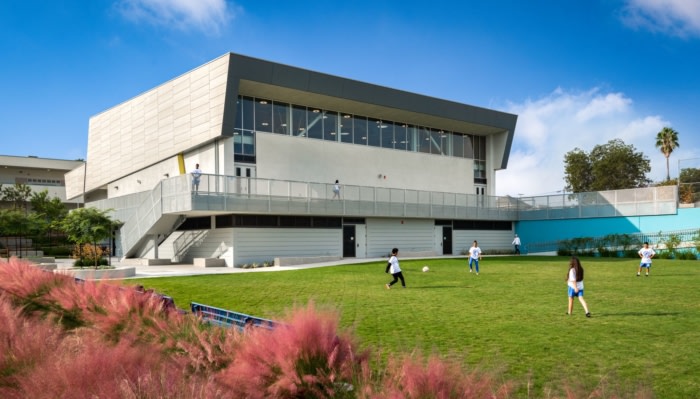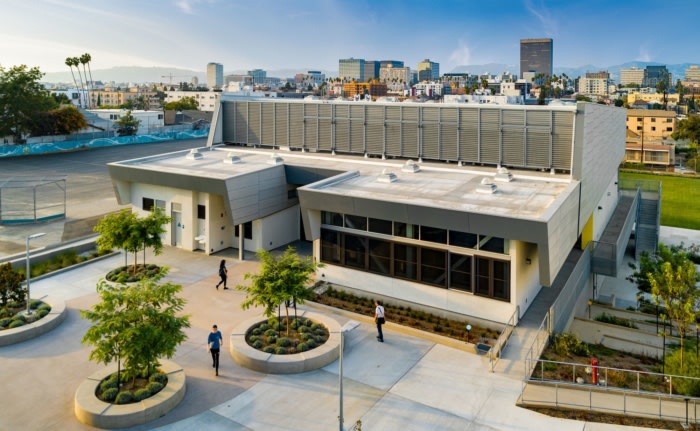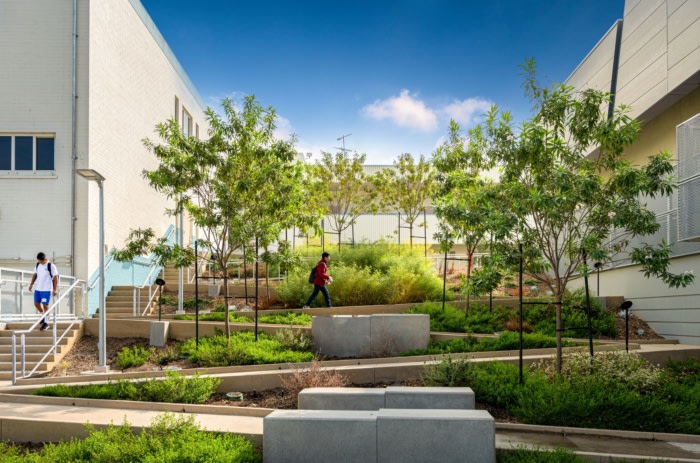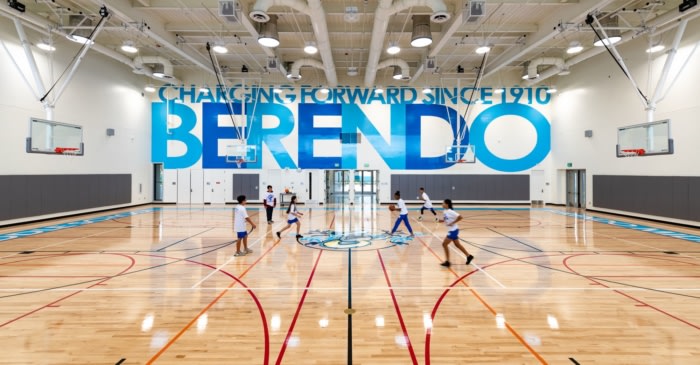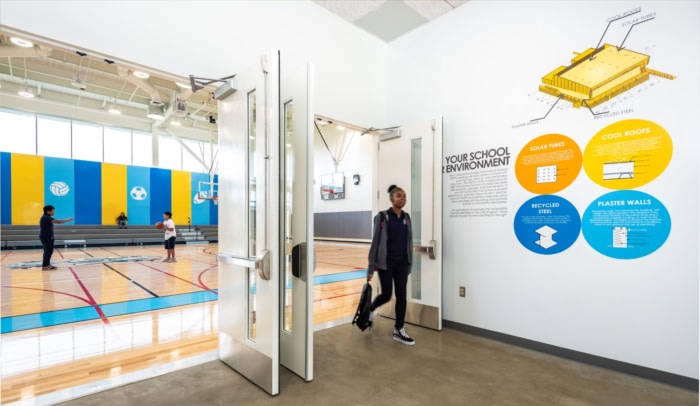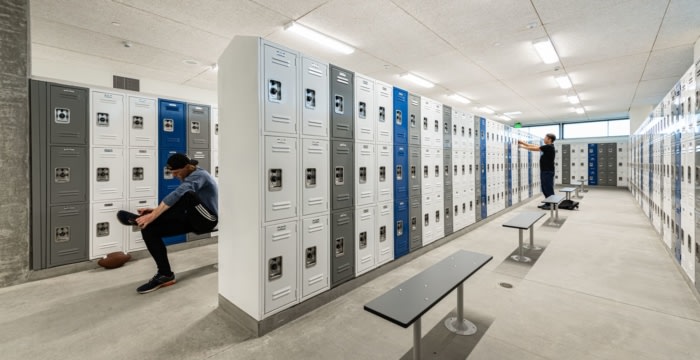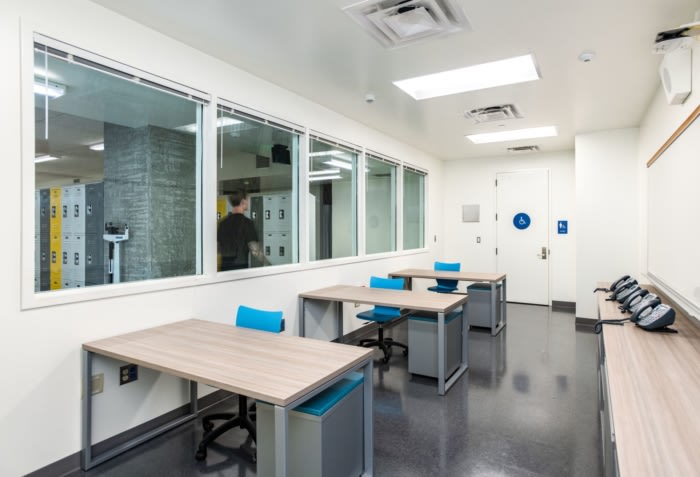Berendo Middle School New Gymnasium & Campus Modernization
CO Architects was tasked with the campus modernization of Berendo Middle School and the completion of their new gymnasium in Los Angeles, California.
Opened in 1910 in Los Angeles, Berendo is the oldest California middle school continuously operating on the same site. The Los Angeles Unified School District (LAUSD) selected CO Architects to design the new free‐standing gymnasium and renovate an existing administrative space into a mental health clinic. The new gym, playfield, and plaza sustainably extend Berendo’s service to its more than 800 students and the neighboring communities of Pico‐Union, MacArthur Park, and Koreatown. The school has nearly 100 percent minority enrollment, the majority of students being Hispanic and economically disadvantaged.
The design brief called for an approach that celebrated and facilitated the connection between Berendo’s compact urban campus, which shares space with the Monsignor Romero Charter School, and the surrounding community. The new gymnasium was sited and designed to offer multiple uses, including fitness, assembly, and social space for both school and neighborhood functions.
The gym’s flat roof turns down at the edges to become a part of the façade compositions on the east and west sides. The balcony on the north side, along with extensive north‐facing glazing, provides a visual connection to nearby Wilshire Boulevard and offers views of the downtown skyline.
An interior corridor in the gymnasium building features a colorful geometric pattern in yellow, white, and blue vinyl, with the pattern repeated in wet areas in tile. (Yellow and white were the original school colors; blue is the current school color.) In the gym itself is a graphic that reads “Charging Forward Since 1910 BERENDO” in large blue letters, while wide vertical stripes of dark and light blue and yellow line the bleachers; the light‐blue stripes sport white images of base‐, basket‐, volley‐, soccer‐, and footballs. Just outside of the gym, more wall graphics explain the building’s sustainable aspects, giving students assurance that their space is ecologically responsible.
The architects incorporated several sustainability features identified by CHPS (Collaborative for High Performance Schools) in the new gym. Throughout the project, structural members were made from recycled steel that might otherwise have gone to landfills. The steel studs were covered with rigid insulation and then plaster, creating a wall assembly that exceeds the R‐value (thermal resistance) required by code and minimizes the energy required for HVAC operation. Further, a cool roof was created by adding a reflective membrane that lessens heat transfer into the building. The gym has several solar tubes, which direct natural light into the building and reduce the need for artificial lighting. The large, north‐facing, three‐story window wall brings in northern light in without contributing to heat gain from the sun.
The project brief called for the development of the landscape to “green” the campus and expand an existing community garden. The new resilient fescue grass playfield is a rare amenity for an inner‐city school, and helps mitigates the heat‐island effect produced by paved playgrounds. A new central plaza with shade trees in large circular planters serves as an informal community meeting area. Between the plaza and the school entrance is the expanded learning garden with educational signage. It was planted with drought‐tolerant species surrounding a zig‐zagging ADA‐compliant ramp, which ties together the lower and upper parts of the campus. These completed green spaces provide a community amenity conspicuously lacking in this dense urban setting devoid of public parks.
Design: CO Architects
Design Team: Jorge De La Cal, Fabian Kremkus, Seth Barnard, Crystal Martinez, Jill Cheng, Heather Heise, Ed Martinez
Photography: Nils Timm


